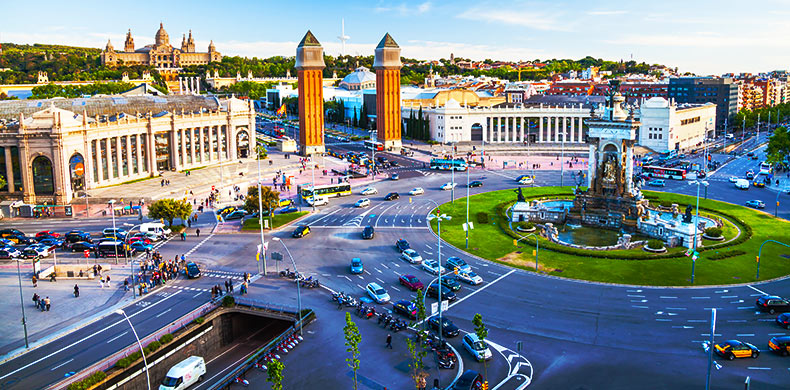Spain is a land of contrasts, where the old and the new seamlessly coexist, creating a captivating blend of traditions and modernity. From the majestic Moorish palaces of Andalusia to the cutting-edge architecture of Barcelona, Spain’s cultural heritage is a testament to the country’s diverse and tumultuous history. As I’ve explored this captivating destination, I’ve been consistently amazed by the depth and breadth of its cultural offerings, each region presenting its own unique flavor and charm.
Historical Landmarks and Architectural Wonders in Spain
One of the most striking aspects of Spain’s cultural heritage is its wealth of historical landmarks and architectural marvels. The Alhambra in Granada, a UNESCO World Heritage Site, is a stunning example of Moorish architecture that transports visitors back in time to the height of the Nasrid dynasty. The Sagrada Familia in Barcelona, Gaudí’s iconic unfinished masterpiece, is a testament to the country’s innovative spirit and artistic brilliance. The Alcázar of Segovia, a stunning medieval castle perched atop a rocky outcrop, is another must-visit destination that showcases Spain’s rich architectural legacy.
Exploring Spain’s Vibrant Festivals and Traditions
Spain’s cultural heritage is not only reflected in its physical landmarks but also in its vibrant festivals and deep-rooted traditions. The annual running of the bulls in Pamplona, the colorful Fallas festival in Valencia, and the captivating flamenco performances in Seville are just a few examples of the country’s rich cultural tapestry. These events and traditions not only celebrate Spain’s history but also offer visitors a unique opportunity to immerse themselves in the local way of life.
The Culinary Delights of Spanish Cuisine
No exploration of Spain’s cultural heritage would be complete without delving into the country’s renowned culinary scene. From the tapas bars of Madrid to the Michelin-starred restaurants of San Sebastián, Spain’s gastronomy is a true reflection of its diverse regional identities. The use of high-quality local ingredients, combined with centuries-old cooking techniques, has resulted in a culinary landscape that is both innovative and deeply rooted in tradition. Whether it’s savoring the smoky flavors of jamón ibérico or indulging in the decadence of crema catalana, Spain’s culinary delights are sure to captivate the senses.
Discovering Spain’s Diverse Natural Landscapes
Beyond its rich cultural heritage, Spain is also blessed with a diverse array of natural landscapes that have played a significant role in shaping the country’s identity. From the rugged peaks of the Pyrenees to the sun-drenched beaches of the Balearic Islands, Spain’s natural wonders offer a stunning backdrop to the cultural experiences. The dramatic Picos de Europa mountain range, the serene Doñana National Park, and the picturesque Canary Islands are just a few of the natural gems that await the adventurous traveler.
Spain’s Famous Art and Artists
Spain’s cultural heritage is further enhanced by its rich artistic traditions, which have produced some of the world’s most renowned artists. The works of Pablo Picasso, Salvador Dalí, and Joan Miró are celebrated globally, and the country’s museums and galleries offer a treasure trove of artistic masterpieces. The Museo del Prado in Madrid, home to an extensive collection of Spanish and European art, is a must-visit destination for art enthusiasts, while the Guggenheim Museum in Bilbao showcases the country’s cutting-edge contemporary art scene.
Must-Visit Cities in Spain for Cultural Immersion
As I’ve explored Spain, I’ve discovered that each city offers a unique cultural experience, catering to a range of interests and preferences. Barcelona, with its Modernist architecture and vibrant street life, is a hub of creativity and innovation. Madrid, the bustling capital, is a treasure trove of historical landmarks, world-class museums, and lively plazas. Seville, with its Moorish influences and captivating flamenco performances, is a gateway to Andalusia’s rich cultural heritage. Visiting these cities and immersing oneself in their local traditions and customs is an essential part of understanding the depth and diversity of Spain’s cultural landscape.
Planning Your Trip to Spain – Tips and Recommendations
When planning a trip to Spain, it’s important to consider the vast array of cultural experiences on offer and tailor your itinerary accordingly. I recommend allocating sufficient time to explore each destination, as rushing through the country’s cultural gems can diminish the overall experience. Additionally, consider incorporating local activities and experiences, such as cooking classes, wine tastings, or guided walking tours, to truly immerse yourself in the Spanish way of life.
Experiencing Spain’s Cultural Heritage Through Local Activities and Experiences
One of the most rewarding aspects of exploring Spain’s cultural heritage is the opportunity to engage with the local community and participate in authentic experiences. From attending a flamenco performance in a traditional tablao to joining a tapas crawl through the narrow streets of Seville, these immersive activities offer a deeper understanding of the country’s traditions and customs. I’ve found that by stepping away from the well-trodden tourist paths and embracing the local way of life, I’ve been able to uncover the true essence of Spain’s captivating cultural heritage.

